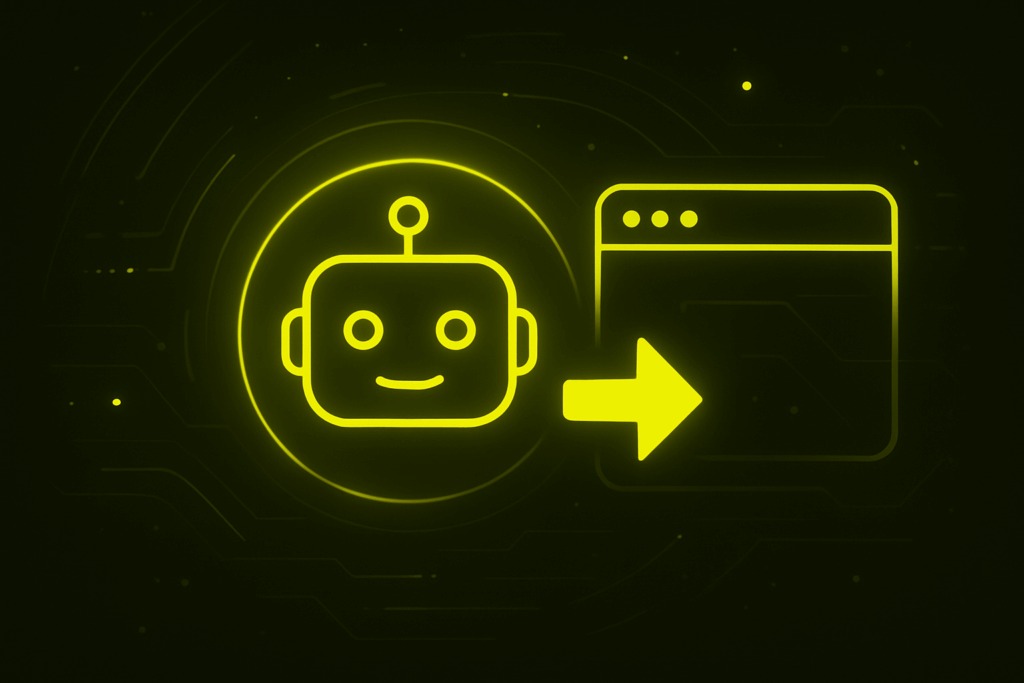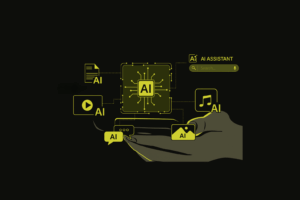Building your own AI chatbot with no-code bot builder tools is now possible and can be worthwhile in some cases. However, the DIY approach quickly reaches its limits.
It doesn’t work with just a few clicks if the requirements are somewhat higher.
Generative AI is perceived as a quantum leap due to two factors: firstly, the capabilities of large language models and secondly, the possibility of communication. The interface to humans is the chatbot. There are now a number of tools that are supposed to allow AI assistants to be built without any programming knowledge, simply by dragging and dropping. However, creating a professional AI agent is not yet possible. The technical and organizational challenges are greater and „do-it-yourself“ approaches alone will not work.
An AI agent is more than just a chatbot
Chatbots or voice assistants invite users to engage in dialog on many websites today. However, these are not yet AI agents in the true sense of the word. They can also act independently. They are connected to tools via APIs in order to perform their tasks. They have memory structures to create context and an autonomous logic that enables them to make decisions without human intervention. And finally, they have a large language model for language processing.
Langflow, BotBuilder or Zapier Chatbots are the names of no-code applications that promise the self-build of such AI agents. Some have the option of uploading documents on the basis of which the assistant can answer specific questions about the company or certain processes. Automation tools such as Zapier, n8n or Make can be used to connect the self-created assistants to other tools, for example for sending emails or creating calendar entries. These connections are often set up within a very short time, saving expensive development costs.
Complex connection to non-standard tools
With these capabilities, no-code tools initially make it easier to get started. However, with more intensive involvement in the subject matter and somewhat more complex application scenarios, the end of their capabilities is quickly reached. For example, when it comes to complex interface integration. If the software or tools to be accessed by the agent deviate from the standard, there are often no suitable APIs or interfaces via which the agent could communicate. Cumbersome workarounds, often associated with high costs, are required to establish a connection after all. This in turn requires expertise and experienced developers. If they are missing, there is the threat of an endless loop of bugs, debugging and frustration.
Another Achilles heel is security: GDPR, ISO standards and internal compliance requirements must be observed, especially in regulated industries. Under certain circumstances, they can make it impossible to upload internal company documents to a provider platform. Because APIs change and models become outdated, security gaps can quickly arise. If they are not continuously maintained and further developed, do-it-yourself bots are therefore a constant security risk. In addition, third-party providers have no influence over changes. It is therefore possible for the agent to behave differently from one day to the next than originally created.
Hard landing after initial successes
The example of a medium-sized car dealership shows where the pitfalls lurk. It wanted to relieve its telephone customer service, which had to answer telephone inquiries about opening hours and appointment bookings in addition to its work in sales and the workshop. One of the tech-savvy colleagues quickly set up a voice assistant using a no-code tool. The telephone number was quickly connected and the initial tests were promising: simple questions were answered and customer data was reliably recognized.
However, there was already a problem with the integration of the self-developed appointment booking system, as the interface problem described above occurred immediately. The agent was able to answer simple questions, but could not enter anything in the calendar – which would have been the real relief. Only with the help of an agency specializing in the development of AI agents was it finally possible to create a tailor-made solution with all the desired integrations.
Conclusion: Self-construction is only worthwhile for limited requirements
No-code platforms for building an agent can be useful if its function is limited: it should be able to answer simple questions about the company and connect common tools via standard interfaces. Furthermore, no confidential data should have to be uploaded to the third-party provider’s cloud. If self-hosting is not necessarily important to you, you only have a limited budget and also some internal IT expertise, do-it-yourself may initially work for you. However, if there are high security requirements, complex integrations or scaling issues, support from a professional IT service provider is required in the vast majority of cases.



